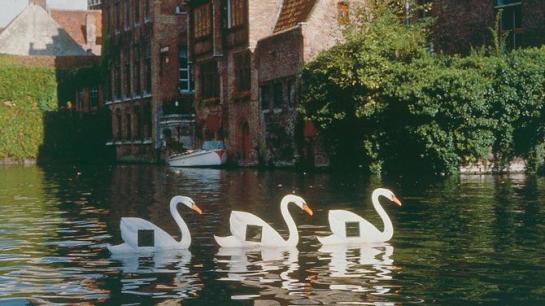VISU-member and PhD student Senne Schraeyen presents his lecture 'Roger Raveel. Providing a New Vision on the Complex Rural Landscape ' at the 6th International Conference for Doctoral and Post-Doctoral Students in Humanities and Social Sciences:

Roger Raveel. Providing a New Vision on the Complex Rural Landscape
Roger Raveel is considered one of Belgium’s major artists after World War II. Mainly studied as the founder of de Nieuwe Visie (the New Vision), a style and artist collective adjacent to pop art and nouveau realism, or as the artist who was only interested in picturing his birth place (the rural Machelen), Raveel’s environmentalist aspects, however, are still underexposed in contemporary art studies.
I argue that Raveel’s practises lean towards what contemporary scholars define as sustainable art. I focus here on the interpretation of art that contributes to experiencing the intertwined, transdisciplinary networks that constitute our environment. Without falling into the trap of closed cybernetics, aesthetics of sustainability are an antidote to reductionists and Fordist lifestyles. They promote a reconsideration of human’s hierarchical position in the complex networks that perpetually create our environment together with nonhuman actors.
Using bright colours, incorporating mirrors and organic materials and honing a painting style switching from hyperrealist to abstract to cartoonish all in one work, Raveel infused the everyday rural village into his art and highlighted its infinite aesthetic pleasures and environmental complexities. Without glorifying the rural live, he protested against his urban peers who saw it as redundant, dull and behindhand.
Crucial is to not separate Raveel’s works from a time period in which Belgium was falling victim to chaotic urbanisations of the landscape. Inspired by the slow modernisation of his Heimat, Raveel was not someone who perceived the rural lifestyle as the antipode of modern urban living. He pictured modernising changes with great interest, but detested the unthoughtful and consumerist driven speed of these changes, which resulted in environmental disruptions and the reduction of rural complexity to a monoculture.
After analysing the sustainable aesthetics in Raveel’s oeuvre, this paper focusses on two environmental works created in the seventies: De Zwanen van Brugge (The Swans of Bruges) and the happening Raveel op de Leie (Raveel on the Leie). Although the first work, an installation piece on the waters of Bruges, was not conceived as environmental art, the work caused people to reappreciate their surroundings, noticing in turn the pollution of it and inciting a bottom-up initiative for environmental restoration. The second work was Raveel’s contribution to a group protest to save the biodiversity of a meander that was to become urbanised. The happening emphasised different uses of the meander (artistic, recreational, ecological) that were threatened to be erased in favour of a modern monoculture.
Click here for the full program of the 6th International Conference for Doctoral and Post-Doctoral Students in Humanities and Social Sciences.
